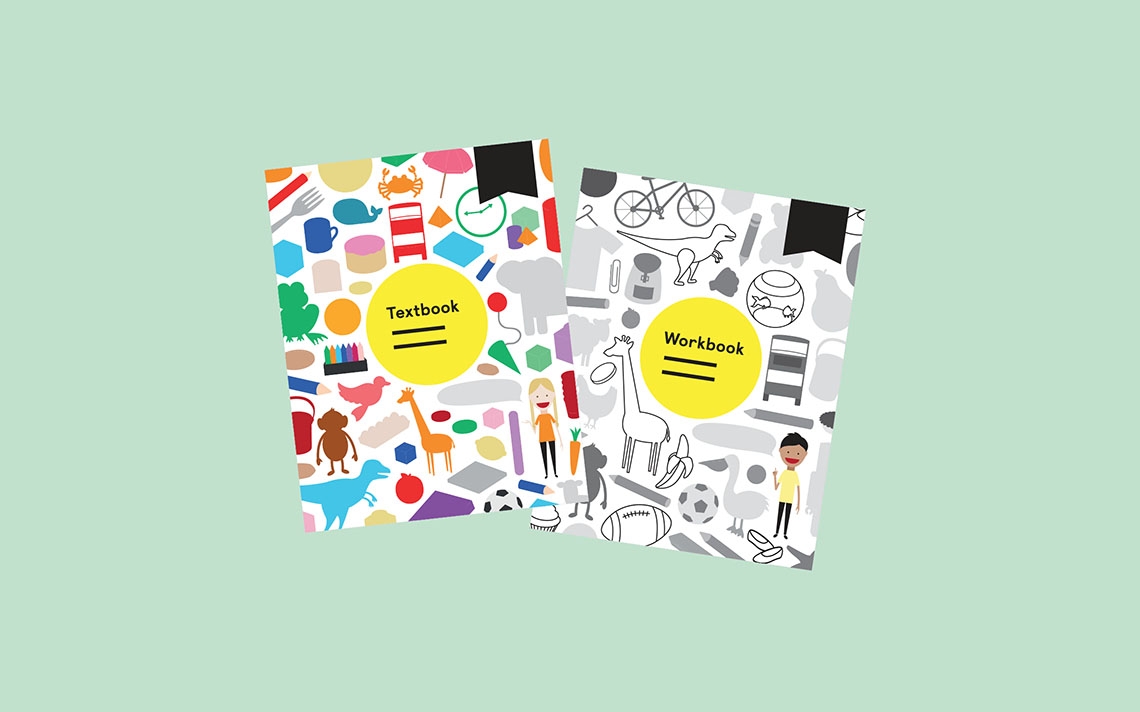Why we reintroduced textbooks into my school
Why we reintroduced textbooks into my school
Given the anti-textbook ethos that has permeated through our profession in the past few years and the constant stretch on our budgets it’s not surprising we’ve moved away from textbooks in our primary school classrooms, but where does that leave our teachers?
Forced to plan bespoke lessons for their classes, often without the necessary time, or depth of knowledge required to do an outstanding job, while our pupils received an inconsistent education with different methods of teaching and without the worksheets and textbooks they required for practice.
As an experienced maths teacher, I’ve seen my fair share of textbook series. Most were dull at best and, at worst, caused pupils problems in understanding concepts, often repetitive, and designed to embed a single method but requiring very little deeper thought or problem solving.
I required an ongoing teacher pedagogy, and books outlining how to teach well and provide pupils with opportunities to learn thoroughly. And where could I also find the time to replicate the planning that is available in textbooks with the consistency that flows from year 1 to year 6 addressing the issues of changing classes and different methods being taught (an OfSTED priority)?
I worked with one dedicated teacher who really wanted to do the best job she could, but was really struggling to teach maths in her year 2 class. We often think that it’s easy to teach KS1 maths but it requires real skill to build solid foundations and ensure the concepts learned are thoroughly embedded. I talked her through how the lesson structure worked within a Maths — No Problem! textbook that I had been using and we planned together until she was confident to use the textbook on her own.
A few weeks later, my maths lead came to see me absolutely flabbergasted having just observed a really strong maths lesson from the previously struggling teacher; it was the trigger to introduce the programme to the whole of our school.
Transform Your Maths Assessment
Insights — our online assessment tool — gives you instant, powerful data to identify gaps and improve results.

Once the Maths — No Problem! textbooks had been embedded I watched a lesson taken from book 5A on dividing 4-digit numbers. The lesson was introduced with a tray of biscuits, baked by the class the day before. How could the biscuits be shared equally between the class? The biscuits were shared by hand, with no calculating. The teacher then asked what would happen if they owned a bakery. How could they share the biscuits then? This was her introduction to the textbook’s ‘In Focus’ task. Rather than being worried by a large number (in this instance ‘2528’), the children were really engaged in working out how they could make up their own stories and then solve the calculation.
The clear child-friendly word and pictorial problems at the start of each lesson ensure that problem solving is a method of teaching rather than something tacked on at the end. By exploring these problems, pupils get used to unpicking the maths that is contained within.
Pupils are then encouraged to explore for themselves, analysing different approaches to solving the problem, and the excitement in a classroom when they have found the method in the book is just lovely. There is then an opportunity for pupils to work through some examples which are carefully picked so that different methods are explored and, through variation in the questions, teachers can pick up misconceptions and ensure that pupils have a solid understanding.
All three of these stages give the teacher ample opportunity for assessment. Only when pupils are secure in their mastery of a concept do they then complete the workbook exercises.
Why do I think that these textbooks are great? Well, by using the excellent pedagogical practice developed in Singapore and incorporating international research they enable high quality learning and teaching. They use Lev Vygotsky’s zone of proximal development (ZPD) to break down the learning into small steps to ensure a really solid foundation, use Jerome Bruner’s iconic concrete-pictorial-abstract (CPA) approach, and incorporate the belief, first discussed by Jean Piaget, and more recently championed by Jo Boaler that “everyone can do maths”.
Louise Hoskyns-Staples

